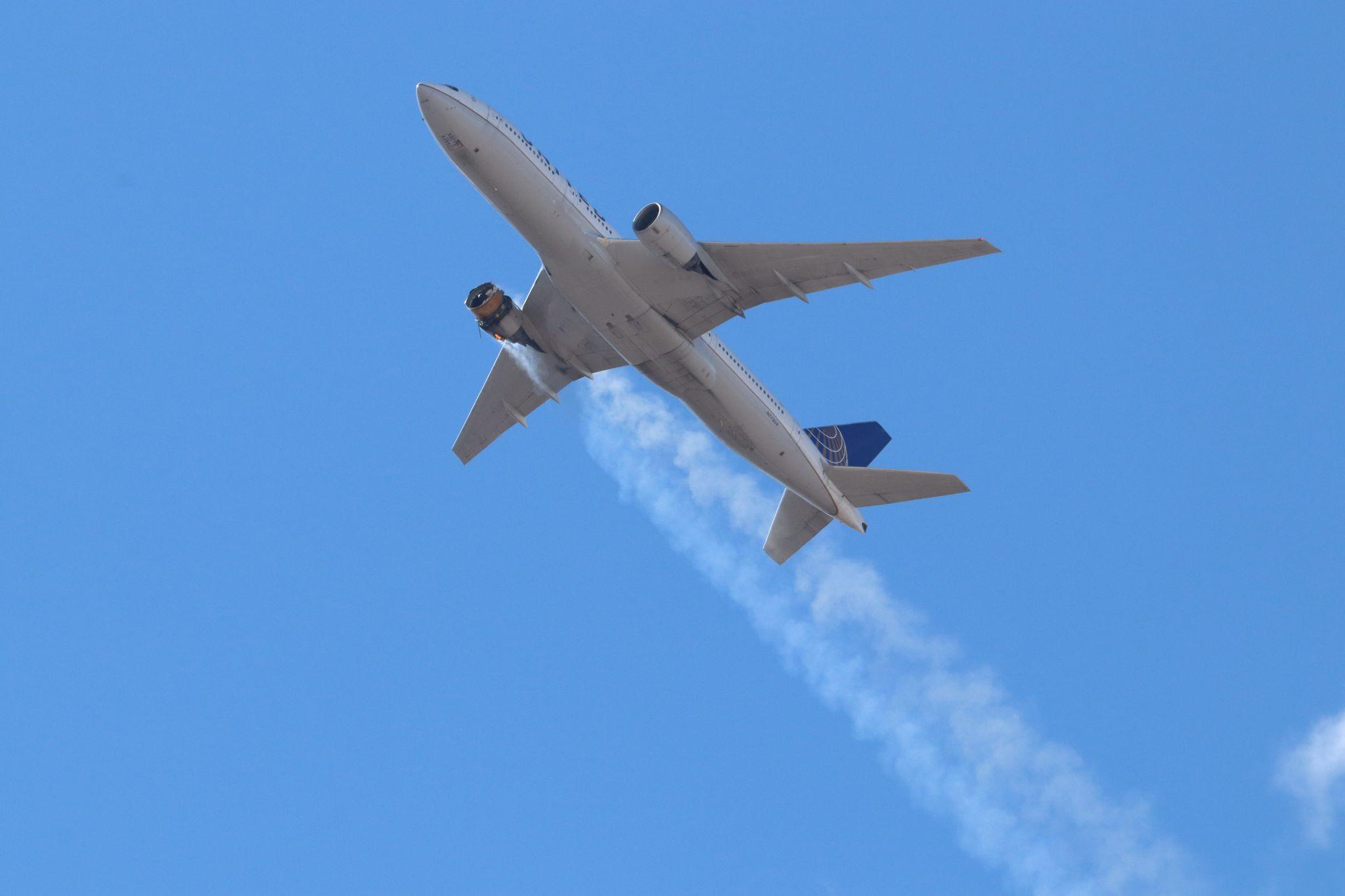Engine Failure Prompts Immediate Action For Pratt-Powered 777s

Global regulators and operators moved quickly to minimize the risk of another incident involving a Pratt & Whitney-powered Boeing 777, banning them from airspace or voluntarily pulling them from service while the FAA, Boeing, and Pratt develop immediate inspection parameters.
The moves came following the Feb. 20 incident in which United Airlines Flight 328, a PW4077-powered 777-200 bound for Honolulu, Hawaii, was forced to return to Denver International Airport after its right (No. 2) engine failed shortly after takeoff. The U.S. National Transportation Safety Board (NTSB) confirmed late Feb. 21 that two fractured fan blades are among the damage it found as it opened an official investigation. The findings came amid word from the FAA that it was working with Boeing and Pratt to finalize an emergency inspection order targeting the blades.
“Based on the initial information, we concluded that the inspection interval should be stepped up for the hollow fan blades that are unique to this model of engine,” FAA Administrator Steve Dickson said. The fan blades are under a 2019 inspection mandate stemming from an earlier incident, also involving a United 777-200.
Operators and other regulators moved quickly to guard against a similar occurrence among the 70 or so affected aircraft not already sidelined due to the global long-haul travel slump. United Airlines, the only U.S. operator, pulled 24 affected aircraft from its schedule immediately. Airlines in the Asia-Pacific region, where the rest of the in-service aircraft are based, followed suit.
Several regulators also put operational bans in place, including Japan’s Ministry of Land, Infrastructure, Transport and Tourism and the U.K. Civil Aviation Authority. EASA said that all affected aircraft approved to operate into its European airspace are either stored or “temporarily pulled out from operation, pending availability of further mandatory airworthiness instructions.”
Boeing concurred with the moves, urging operators of PW4000-powered 777s, which includes 777-200s, -200ERs, and -300s, to keep them out of service until the U.S. agency acts.
“While the NTSB investigation is ongoing, we recommended suspending operations of the 69 in-service and 59 in-storage 777s powered by Pratt & Whitney 4000-112 engines until the FAA identifies the appropriate inspection protocol,” the manufacturer said late Feb. 21.
Boeing’s statement came after the only U.S. operator, United Airlines, pulled its 24 affected aircraft from service, and Japan’s regulator ordered its airlines to ground them.
The incident, which took place as the 1994-built aircraft was in the initial climb phase, led to debris from the No. 2 engine being scattered over Broomfield, Colorado, a city to the northwest of Denver. Video of the event taken from inside the cabin and images of debris on the ground pointed to not only a fan blade failure, but also the loss of the inlet cowl lip and parts of the nacelle casing.
The 777-200, which was operating United’s Flight 328 with 231 passengers and 10 crew, landed safely. There were no injuries reported on the aircraft or ground.
NTSB in an investigative update Feb. 21 said two fan blades were damaged. One was fractured “near the root,” and an “adjacent fan blade was fractured about mid-span.” Investigators found part of one blade imbedded in the engine’s containment ring, and the “remainder of the fan blades exhibited damage to the tips and leading edges,” NTSB said. Damage to the airplane was “minor,” the NTSB said. Images obtained by television station CBS4 Denver showed damage in the wing box and wing-body join area along the right side of the aircraft’s belly.
The Colorado event appears to be strikingly similar to recent PW4077 fan blade-related failures in which inlets or cowling parts detached. These include an incident on Feb. 13, 2018, involving a different United 777-200 in which the No. 2 engine failed 30-min. before landing while en route from San Francisco to Honolulu.
The NTSB cited shortcomings in Pratt’s thermal acoustic imaging (TAI) inspection process for setting the stage for the 2018 incident. During that probe, Pratt reported two previous PW4000 112-inch fan blade fractures, in October 2008 and April 2010. It found cracks in another five blades—one found visually and four discovered using the TAI process.
In the wake of the 2018 incident, the FAA issued a March 2019 airworthiness directive requiring initial and recurring inspections of 112-in. PW4000 fan blades. Other versions of the PW4000 engine that do not have the hollow titanium, shroudless fan blades found on the 112-in variant and power different aircraft, including 747s, 767s, and Airbus A330s, were not affected. It is not yet known if the blades involved in the United 328 event had been through this inspection.
More recently, on Dec 4, 2020, the No. 1 engine on a Japan Airlines 777-200 lost a fan blade shortly after takeoff on a flight from Okinawa, Japan to Tokyo. The Japan Transport Safety Board is investigating that incident.


Comments
Anytime an engine not only fails but containment fails, the affected type with that engine shyo0uld be grounded until full remedy put in place.
The so called inspections are clearly a joke and its just good luck we have not had a crash.
The Good Old Boy network needs to stop and public safety be put first and foremost .
FAA has been and continues to be pathetic and Dickson needs to go.